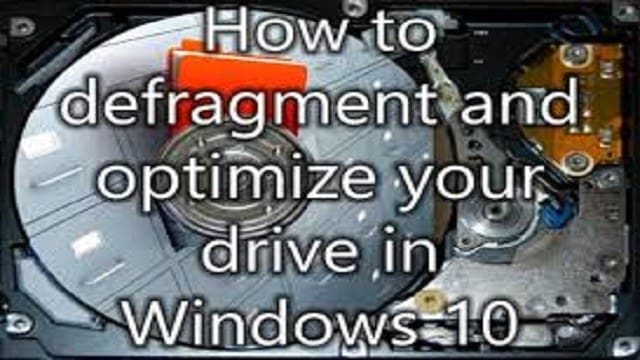
Sometimes, files on the Windows 10’s hard drive get fragmented, and for your computer, it is time-consuming to check the multiple places on your drive. As a result, the computer’s performance level will be decreased. To run Windows 10 system more efficiently, you’ll need to optimize the drive attached to your computer by defragmenting it.
Like other OS, Windows 10 automatically chooses the optimal optimization for your drive. By default, Optimize Drives Utility runs automatically on a weekly schedule at the time set for automatic maintenance. But you can also optimize drives on your PC manually!
How does Optimize Drives work?
When you run this utility to defrag the hard disk, the scattered files get re-arranged and occupy the space contiguously on the storage location. This orderly management of files on the hard drive will consume very little time to read and write the files. As a result, the increased data transfer rate will increase Windows 10 PC’s performance level.
After using this tool, you will notice an improvement in the startup time of files and applications available on the hard drive.
How often is defragmentation required for your computer?
There is no particular set of rules or numbers to defrag a hard drive, but it would be good to defrag the drive when the fragmentation level is 5-7%. Also, you must defragment when you find any sluggishness in the operating system.
How to Defrag Windows 10 Hard Drive?
One of the easiest ways to access Optimize Drives Utility is to type Defrag in the search box and choose Defragment and Optimize Drives options.
The following method to open Optimize Drives Utility is through the Control Panel.
- Open the Control Panel on your computer.
- Go to the System and Security option.
- On the System and Security window, click the Defragment and Optimize your drives option under Administrative Tools.
- Select the drive you want to defrag and click the optimize button to initiate the process.
- Don’t rush on! Let Windows 10 complete the process.
Analyzing Windows 10’s Disk Drives
In the Optimize Drives windows, you’ll find one more option along with Optimize called Analyze. This is an alternative to Optimize, which can be used to analyze the hard drive.
On clicking this button, the Optimize Drives tool will analyze the selected drive, and then you can see the percentage of fragmentation that happened on that drive.
Depending on this info, you can easily decide whether to defragment the hard disk.
Scheduling the process - Disk Defragmentation
The process of Disk Defragmentation is set as once a week by default. However, you can schedule the process daily and monthly with the help of Optimize Drives. To do this, click the Change Settings option in the Schedule Optimization section. You can switch between monthly, weekly, and daily options from the next window. Also, verify whether the option Run on a Schedule is turned ON. Once you hit the Choose button, you have selected a drive you want to include in the Defragmentation schedule.
An important note on Solid State Drives (SSDs)!
Since SSDs have a different style of file arrangement, as they have a good read and write speed and do not slow down like traditional hard drives, they do not require to be fragmented. Defragmentation can make them down their lifespan. You can even include an SSD drive for the Optimization schedule.
However, if System Restore is enabled on Windows 10, the SSD drive gets defragmented automatically when it must be done. You can use Windows 10 to deal with this setting as it better knows what suits your computer.
Like defragmentation and optimization, one more aspect called Formatting accounts for speeding up your computer and the speed of external storage devices. Well, formatting is a good idea. But, sometimes, you may lose your precious data if you haven’t taken a backup before formatting. So, maintaining backups is a wise idea!
You can also learn how to get back data from formatted hard drive with the help of Remo Hard Drive Recovery Software and get the job done in a few simple steps.